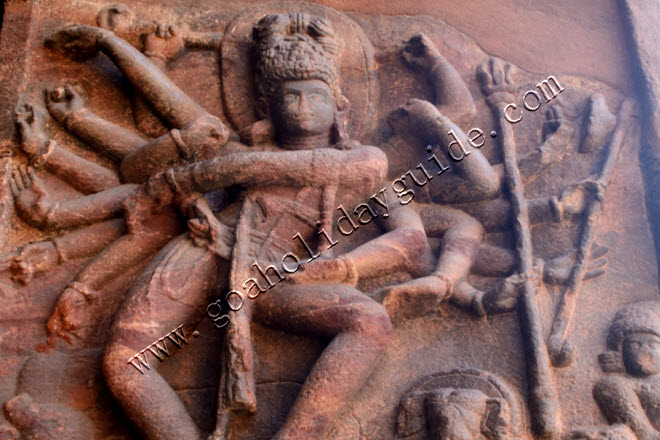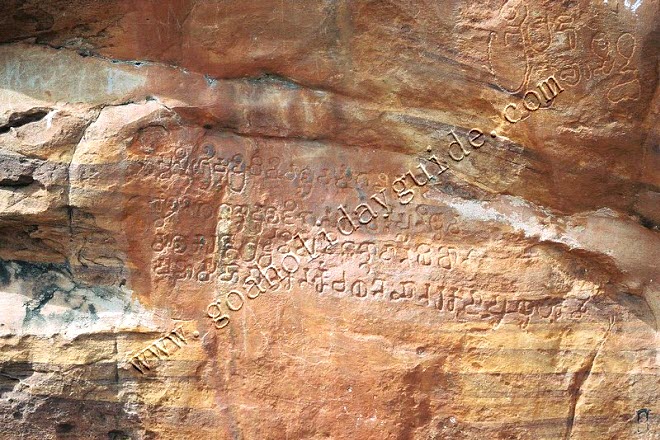Goa Under Chalukyas, Rashtrakutas And Shilaharas
Rashtrakuta Evidence
The Rashtrakutas ruled for 250 years until 973 A.D. They are credited by some historians with a Goan origin, as being originally chaddi Kshatryas from the Goan village of Loutolim. They had their ministers in the their Goan fellowmen in the Saraswat group
The Chalukya Rule In Goa
The Chalukyas of Badami came to power around 540 A.D. in southern India. Records dating back to 610 A.D. have been discovered in Goa related to Pulekeshi II the emperor of the Chalukyas. Vikramaditya, Pulekeshi's second son, succeeded him to the throne, and their elder son, Chandraditya, appears to have been appointed as a viceroy of the outlying area of the empire that was the Konkan. This is evidenced by the several grants and inscriptions found in and around Goa. Vinayaditya succeeded him to the throne and later Vijayadita followed him in 696 A.D., who in turn was succeeded by Vikramaditya II who reigned up to 745 A.D.
The Rashtrakuta Rule In Goa
While the Chalukras of Gujarat, another branch of the family, were ruling there, two princes of the Rashtrakuta clan were placed by them in charge of the districts of now Maharashtra. Rashtrakuta Govindaraja was entrusted with Chiplun in Ratnagiri and Dantidurga, the founder of the would be dynasty of the Rashtrakutas ruled over Chananapuri in 742 A.D. Later the tables appeared to have turned on the Chalukyas who had then to serve as vassals of the Rashtrakutas in their turn, with Vikramaditya's daughter Vinayavati, becoming the queeen of the Rashtrakuta prince, Govindaraja. In 753 A.D., Dantidurga defied the might of the Chalukyas and defeated them in battle. Dantidurga's successor, Krishna is said to have changed the symbol of the Chalukyas, the great boar to a fawn and etched it on his coat of arms to denote new power.
The Rastrakutas were overthrown by the Kalyani Chalukyas around 980 A.D. and the hegemony of the Deccan region went back to the old masters, albeit in a different branch. However the Konkan region was treated as their feudatory province and was ruled by the Shilaharas.
The Shilahara Rule In Goa
The Shilaharas had three families, one of which known as the South Goa Shilaharas, belonged to Goa or SOuth Konkna and ruled Goa from 750 A.D. to 1020 A.D., styling itself as Simhaleshwar, lord of the Simhala, which meant the Goa Island of Tiswadi. They are reported to have ruled from their capital Balli in today's Quepem in Goa. They had their standard the golden eagle in human form with two arms and wings. They worshipped the goddess Mahalakshmi, whose temple was constructed in their time in Netorlim, Sanguem.
The Goan Shilahara branch was founded by Shahnapura, as stated in the Kharepattn plates, who acquired the Southern Konkan as a favour bestowed upon him by the Rashtrakuta emperor, Krishna. Rattaraja, the last known king of the dynasty, ruled upto 1020 A.D. From the grants made by the Shilaharas it is known that the region from the Sayhadris to the Coast was known as Simhala Dvipa by the Shilaharas and as Revati Dwipa. by the Chalukyas. The Goa Shilahars were overthrown by the Chalukyas in 1024 when the Chalukya king Jaisimha II invaded the Konkan.

